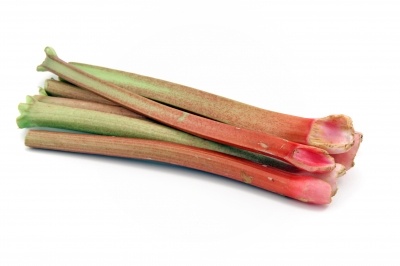
Rhubarb may be everything to a crumble and it appears to possess some very interesting bioactives which have been shown in some cell tests to destroy certain cancer cells.

A new study conducted at the Winship Cancer Institute of Emory University in Atlanta, Georgia, USA by Dr. Jing Chen has found that an orange pigment which is found in both rhubarb and lichen could have anti-cancer potential. Dr Chen is the lead researcher and Professor of Hematology and Medical Oncology at the Emory University School of Medicine as well as the Institute. It is important to remain cautious about the hype that gushes forth from studies such as this but any natural substance that challenges a global killer is worth assessing further.
The pigment called either parietin or physcion was found to either kill or at least slowdown the growth of human leukaemia cells taken from a sufferer with acute lymphoblastic leukaemia without destroying the human blood cells. It appeared the pigment could also check the growth of human cancer cell lines that were grown from head, neck and lung tumours when these were grafted into mice. This particular pigment was a more potent derivative of that found in lichen and known as S3 and could cut the growth of a lung cancer cell line by three to eleven days when these cells were implanted in the mice.
The research was designed to identify inhibitors of a key metabolic enzyme 6-phosphogluconate dehydrogenase (6-PGD) which shows significantly higher activity in various cancer cell lines. It is a common phenomenon that cancer cells have altered metabolic states and the enzyme 6-PGD is vital in the translation of energy substrates into cell division. The metabolic pathway affected is the pentose-phosphate pathway. Certain doses of parietin killed half the leukemia cells in the cell culture within 48 hours. There is no understanding yet of how much rhubarb is necessary for consumption to have any benefit for example and as to whether this would be viable.
Further research is essential to establish veracity for the pigment in tackling cancer cells. For defining toxicity levels with other normal cell lines and of course establishing efficacy in human studies. None the less it may make those of us who wince at rhubarb’s tartness to accept it always has done us some good.
References
Lin, R., Elf, S., Shan, C., Kang, H-B., Ji, Q., et al., (2015) 6-Phosphogluconate dehydrogenase links oxidative PPP, lipogenesis and tumour growth by inhibiting LKB1–AMPK signalling. Nature Cell Biology DOI: doi:10.1038/ncb3255
Leave a Reply